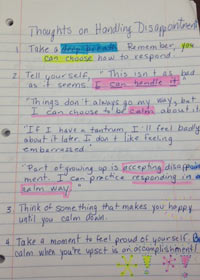3 Ways to Use Visual Schedules to Enhance AAC Learning

Visual schedules are a go-to strategy for helping AAC learners understand the plan for therapy or instructional session or a whole day. They have great utility beyond that, though. If you’re looking for ways to increase your use of this evidence-based strategy, here are some ideas to consider.
- Create a Visual Representation of an Activity: A powerful way to build understanding of and cooperation with an activity is to show what will be happening. This is particularly helpful when doing an activity that has a logical sequence or set of steps to be followed, such as making a smoothie or building a Lego car. We can create and teach the use of mini schedules depicting each element of the process to help our AAC clients/students become more comfortable and independent with the process.
- Parts of a Problem-solving Process: When AAC learners confront challenging situations, particularly those with a social or emotional component, we can help them identify solution strategies. Sometimes, these come in the form of a set of steps to follow to deal with or resolve the situation. We can support AAC learners through co-constructing these, and through teaching and practice. For many, having a visual representation of the steps to follow can be a helpful reminder of their options.

- Steps to a Programming Process: Many AAC learners benefit from instruction on how to do some of the programming on their speech-generating device. We can make visual schedules to show the steps that we are teaching for things like correcting pronunciation errors (e.g., Charmenea=Shar-may-nuh) and changing the speaking rate.
Do you use visual schedules in your AAC therapy and instruction? We’d love to hear about it.
Filed under: Featured Posts, PrAACtical Thinking
This post was written by Carole Zangari
